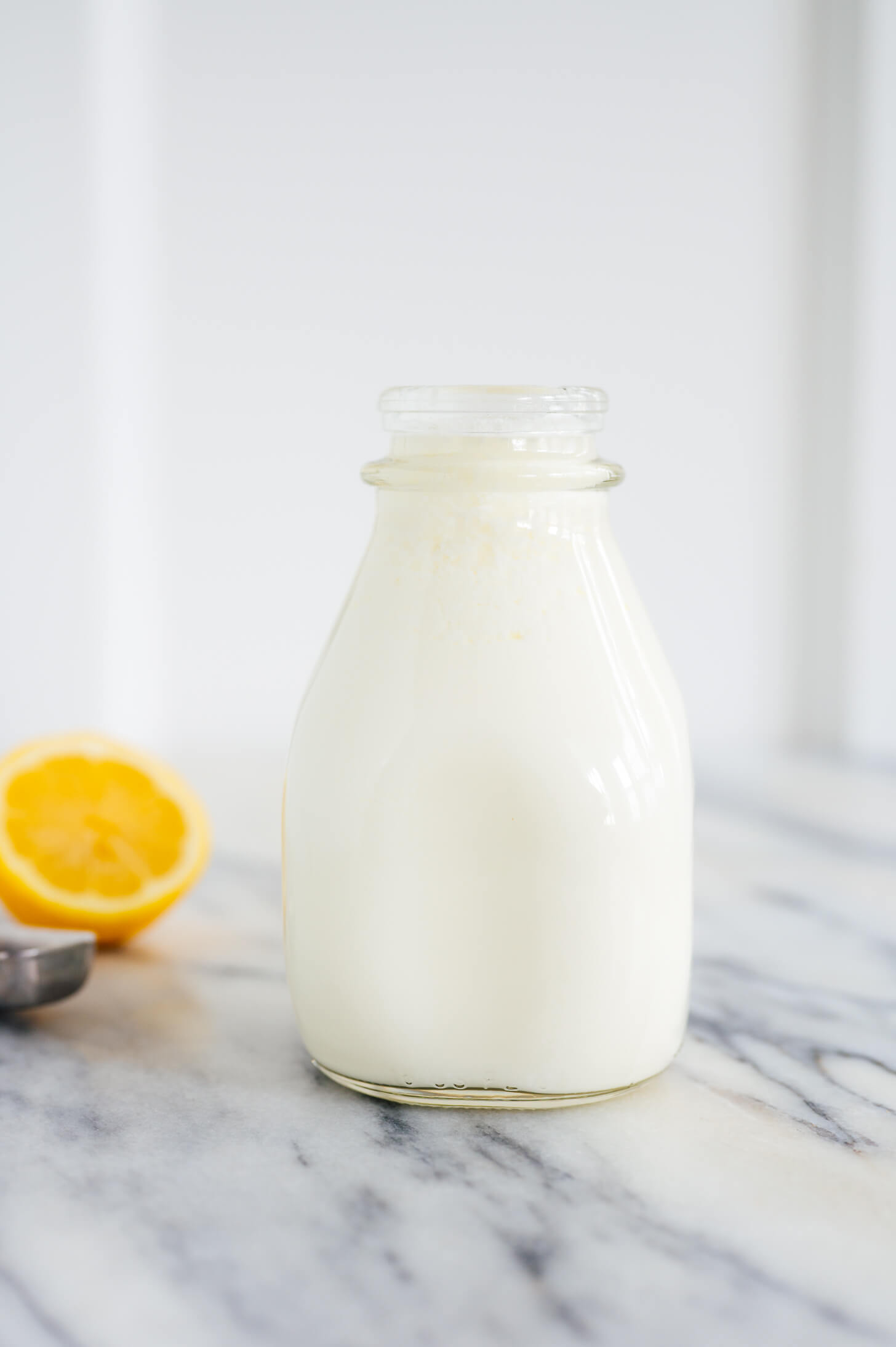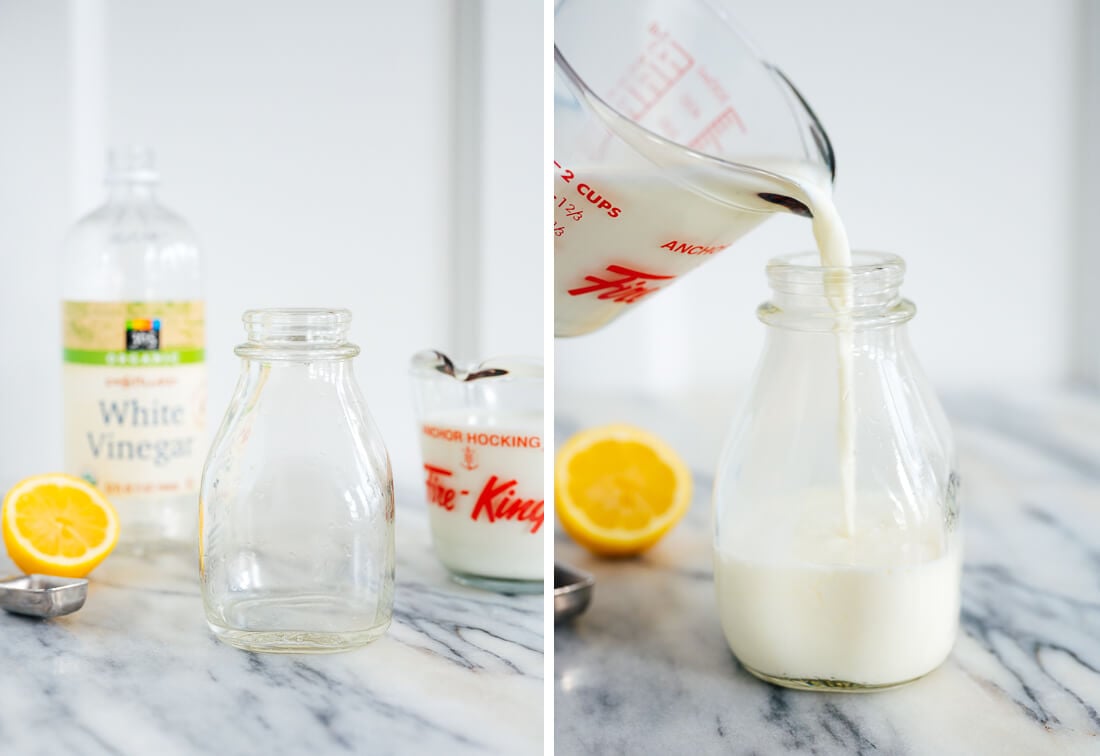
Let’s talk about buttermilk for a minute. Buttermilk in baked goods yields wonderfully fluffy, light and tangy results. You’ve seen me use buttermilk in muffin and pancake recipes, and I’m super excited to share a simple cake recipe that calls for buttermilk later this week.
So, what is buttermilk? Traditionally, buttermilk was the fermented liquid leftover after churning cream into butter. These days, store-bought buttermilk is typically made from milk with added lactic bacteria, which produce lactic acid.
Contrary to what its name and thickened texture suggest, buttermilk is not buttery and is relatively low in fat. Store-bought options are usually about on par with whole milk, though reduced-fat options exist.

Why do we use buttermilk instead of plain milk? Tangy flavor aside, the acid present in buttermilk helps counteract baking soda, which is basic. Baking soda on its own is quite bitter—it needs both acidity and liquid to taste and function properly.
Buttermilk acts similarly to sour cream or yogurt, which are thicker cultured dairy products. Since buttermilk is thinner, I typically use about two-thirds cup buttermilk in place of one cup sour cream or yogurt.
Today, we’re talking about acidified buttermilk, or milk with added acid (vinegar or lemon juice) so it acts as buttermilk. This is the perfect substitute for your baking projects when you don’t have buttermilk on hand.
I love use this trick because it saves me from buying buttermilk, since I never seem to use up a full bottle in time! This method is also convenient if you follow a dairy-free or vegan diet, because you can make buttermilk with any type of milk.
The post How to Make Buttermilk appeared first on Cookie and Kate.

0 comments